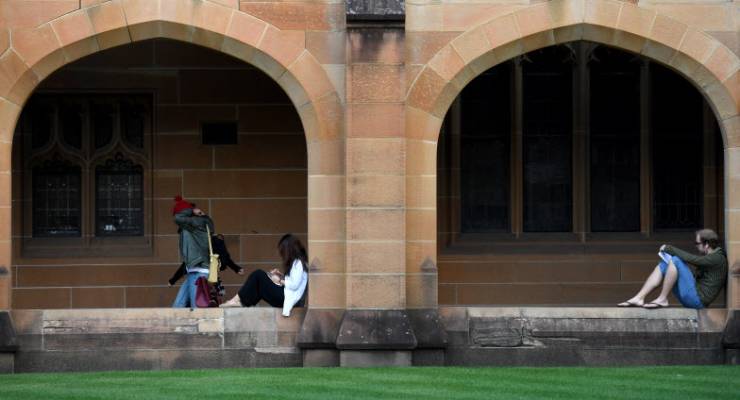
The Australian university education sector is facing an existential crisis; its reliance on China, for about 30% of crucial international student revenue, is finally turning sour.
Chinese enrolments next year are expected to be down by about 10%, with some institutions facing double that fall. Normally, countries like India, Nepal and Pakistan would be seen as low-hanging fruit to make up any shortfall, but they have quickly emerged as highly problematic markets following reports of “non-genuine” students using loopholes to obtain student visas. Some institutions are now reportedly cracking down on students from India.
People intimately familiar with university enrolment trends say this has reached epidemic proportions. The percentage of students from India being rejected has been rising in recent years and is now more than 20% — more than double the average rate of rejection for all other students. Confirmations of enrolment and offer letters are now regularly being withdrawn or cancelled for students from India, Pakistan and Nepal.
With once-reliable Chinese enrolments seen to be flagging, this leaves the industry in a tight spot. Australia was the global pioneer in tapping developing nations for international students. By 2007, the international student market had blossomed into a major industry in Australia — one that was worth $35 billion in 2018, making it Australia’s fourth largest export. There are now about 700,000 foreign students in Australian institutions.
China, with its 1.3 billion population and decades of economic growth, has given rise to a middle class and there are plenty of parents desperate to get their child a decent education. This was the mother lode for Australian universities, colleges, TAFEs and high schools. At the end of 2018, 30% of foreign students across universities, vocational colleges, feeder courses and high schools hailed from China. It’s a revenue stream that has given the industry unfettered growth for decades. Australia’s institutions quickly got lazy focusing the bulk of their global marketing efforts on China.
Now the worm has turned and the warning signs are in. For the second half of 2018, visa applications granted from China fell by 3.3% while those from India were up 53.5% and Nepal 47.8%.
Education agents say the reasons are complex. They certainly include the deterioration of diplomatic relations between Beijing and Canberra, now at their worst position since the 1989 Tiananmen Square massacre. A strong part of the cooling between the nations has been serial reporting of rising Chinese Communist Party influence in Australian universities, which resulted in new foreign influence laws that irked Beijing.
Then there is the relative length of Australian masters’ courses: two years compared to one in the UK, a nation where Chinese student numbers are surging. Meanwhile, the quality of education at Chinese universities compared to 10 or 15 years ago has risen, together with a rising nationalistic atmosphere.
The pain, naturally enough, is not being spread evenly. In recent years, Chinese students have sharply shifted their Australian education preferences towards the top-tier Group of Eight universities, where it is concentrated on those in Sydney and Melbourne. Education agents are seeing double-digit falls in Chinese enrolments at second-tier universities.
Now the question for Australia’s higher education sector is: what’s next? The most immediate concern is just how far Chinese enrolments will fall. The ruling Chinese Communist Party has already issued safety warnings about Australia, and state-run media is delivering consistent bad news reports on the relationship between the two countries.
Universities have been scurrying to set up marketing infrastructure in other target nations. South America is a fast-growing market with enrolments from Brazil up 12.3% in 2018 compared to 2017, and Columbia seeing growth of 21%. Both are now top-10 markets.
Other Asian markets are slowing or falling. Malaysia was up only 3% and Indonesia 4%; while Vietnam, South Korea and Thailand all went backwards. The Philippines is the only other growth market, with enrolments up 65% year-on-year according to figures released in July.
China will remain the biggest student market for some time to come. But the salad days are over and all but the very top institutions need to move fast to plug the coming revenue hole.








Crikey is committed to hosting lively discussions. Help us keep the conversation useful, interesting and welcoming. We aim to publish comments quickly in the interest of promoting robust conversation, but we’re a small team and we deploy filters to protect against legal risk. Occasionally your comment may be held up while we review, but we’re working as fast as we can to keep the conversation rolling.
The Crikey comment section is members-only content. Please subscribe to leave a comment.
The Crikey comment section is members-only content. Please login to leave a comment.